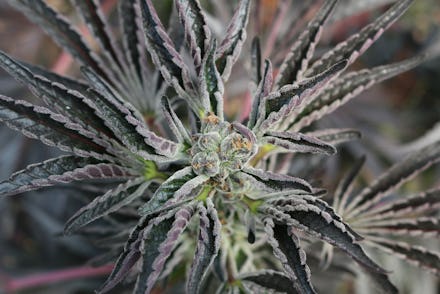Use the Dank Science of Marijuana to Get a Better High

You've done it, America: Thanks to the rise in marijuana legalization, weed dispensaries operate more like craft beer shops instead of the head shop section at the record store. The modern weed dealer will talk your ear off about body vs. head high and citrus vs. earth notes. More than ever, you've gotta know your green. And it's worth it. A little knowledge is going to change the way you smoke.
A quick caveat: A lot of the information about what different cannabinoids, like THC, actually do in your body remains largely anecdotal. We know that different strains of marijuana can affect users in different ways. A lot of that comes down to your own physiology. But that's a good place to start.
Follow your nose
Marijuana contains terpenes, the oils in cannabis that give it its distinct smell. The stronger the terpenes, and the more attracted to that particular smell you are, the more effective the bud.
The stronger the terpenes, the more effective the bud.
"Just the way we use our nose to determine what foods are good for us or what might be poisonous, we can use our nose to determine what strains are best for use," said Cassandra Maffey, head grower at Verde Natural, in a phone interview.
"Terpenes actually work with cannabinoids to offer a certain experience. And if you like one citrus strain, you're probably going to like 10 more citrus strains."
The smell, Maffey suggests, might actually be connected to a strain that works best for you, down to the different cannabinoids those terpenes are paired with.
It goes deeper than indica and sativa
Think of the whole marijuana universe the same way you'd think of wine. When you go to the store for a bottle, at the most base level, you're looking for red or white — and then if you get more involved, you look for merlot or pinot noir, Californian or French, 1988 or 2010, and so on. There's so much more to it than grape color.
The distinction between indica and sativa "barely scratches the surface."
Indica, known for its introspective, subdued high, and sativa, known for the uplifting, physical high, are the red and white of marijuana: They're terms we've been using for years, easy distinctions you can make to purchase something at least in the ballpark of your interest. Only for marijuana, defining weed as either indica or sativa is archaic.
The distinction between indica and sativa "barely scratches the surface," said Maffey. "I think it's inaccurate more often than it's accurate." And that's because "by now, everything is a hybrid."
But retailers sell what people know
Evrett Kramer is the co-founder of a medical cannabis subscription club called Potbox that only lets subscribers choose sativa, indica or hybrid, not specific strains. He believes the indica-sativa distinction is better as a starting point.
"It's a catch-22," he said in a phone call. "Growers know it's not a perfect system and not scientifically accurate, but on the other hand, the public has come to accept it's the way they go about picking strains."
The benefit of hybridization
Different strains can be bred for their positive traits. Growers focus on treating anxiety and sleeplessness or making you more active and social. For instance, Maffey has a strain that helps with migraines, offers an "uplifting high" for physical activity and is helpful for people with anxiety. Another one, a mix of blueberry strains, smells like a blueberry Mr. Sketch marker and helps with sleep.
As dispensaries and technology improve, you can actually find the strain profile, or the makeup of a certain strain. So if you find something that works well for you, you can compare it to other strains with similar profiles, comparing and contrasting until you find your best high.
Finally, a few words on "dank"
The word "dank" is often used to just describe good, stinky weed. But according to Maffey, dank describes a really specific kind of marijuana.
Never ever should weed smell like mold.
"It's applied to OG and diesel strains," she said. "It's not moldy and musty, but there's something dark and earthy, something more reminiscent of oil, like the blood of the earth. It indicates a really good OG high. So if you have a higher terpene content, if the weed smells stronger, it's usually indicative of a stronger, more potent, high-quality cannabis."
By the way, that mold smell? Never ever should weed smell like mold. No matter what that guy at the concert says.